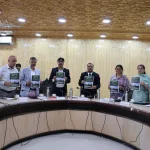Opening statement
Given the worldwide environmental issues, the significance of precise and dependable environmental data cannot be emphasized enough. The data we gather is crucial for comprehending and controlling natural resources, encompassing activities such as evaluating air quality, tracking water contamination, and examining biodiversity. Nevertheless, the accuracy of this data is greatly influenced by the sampling techniques utilized. Thorough sampling guarantees that data is a true reflection of the whole population, without any distortion or favoritism, and is strong and reliable. This is crucial for making well-informed decisions and implementing impactful environmental policies.
Exemplification
The primary goal of sampling is to acquire data that precisely represents the entire population. In the field of environmental studies, this refers to the process of making sure that the sample accurately represents the many types and patterns of the environment under investigation. To comprehensively assess the biological state of a forest, it is necessary to collect samples from multiple places, encompassing diverse types of plants and variable heights.
Reducing Bias
Sampling bias can result in distorted data and inaccurate conclusions. Efficient sampling methods are developed to reduce bias, guaranteeing that each section of the study area has an equitable chance of being sampled. Techniques such as random sampling, systematic sampling, and stratified sampling are frequently used to attain this equilibrium.
Cost effectiveness
Utilizing efficient sampling procedures can greatly diminish the expenses and time needed for data collecting. Researchers can achieve sustainability and feasibility in data collection by strategically choosing sample sizes and procedures, eliminating the need for extensive surveys.
Sampling techniques commonly used in the collection of environmental data
Simple random sampling refers to the process of selecting a subset of individuals or items from a larger population in a way that each member of the population has an equal chance of being chosen. This method is commonly used in most of the surveys. In this method, every member of the population has an equal probability of being chosen. This approach is direct and effective in mitigating selection bias. Nevertheless, it may not consistently capture the diversity of the environment.
Systematic sampling is a method of selecting a sample from a larger population in a systematic and organized manner. It involves selecting every nth element from the population, where n is a predetermined interval. For instance, collecting samples at regular intervals of 10 meters along a straight line. This approach is straightforward and guarantees that the entire study region is covered. However, it may induce bias if there are underlying patterns in the environment that align with the sample period.
Stratified sampling is another method that includes dividing a population into separate subgroups, known as strata, based on certain characteristics. Then, a sample is taken from each stratum. This method guarantees the representation of all subgroups in the sample, which is particularly advantageous in diverse situations.
After the selection of samples in a proper way which ensures maximum representation of the population, one can apply different methods for estimating the parameters like the sample mean, variance, or the ratio method of estimation under different conditions. These methodologies can be studied in detail in Cochran (1977).
Case Study: Water Quality Monitoring
Examine a case study involving the monitoring of water quality in a sizable lake. The objective is to evaluate the concentrations of contaminants, specifically nitrates and phosphates. The lake is partitioned into distinct zones using stratified sampling, which takes into account factors such as depth and proximity to pollution sources like industrial discharge points. Subsequently, samples are gathered from each zone in order to obtain a full depiction of the water quality.
Advanced Sampling Techniques
Adaptive Sampling refers to the process of adjusting the sampling rate or strategy based on certain criteria or conditions. This method is more versatile as it enables modifications based on initial discoveries. For instance, in the event that elevated concentrations of pollutants are identified in a particular region, further samples might be collected from that region to acquire more comprehensive data. This method is valuable for examining dynamic and unpredictable situations.
Remote sensing refers to the collection of data about the earth’s surface from a distance, typically using satellites or aircraft. Geospatial sampling involves the systematic collection of data points or samples across a geographic area. It is one way of using Auxiliary data for estimation of ground parameters.
Technological progress has made remote sensing and geospatial sampling indispensable for gathering environmental data. Satellites, drones, and geographic information systems (GIS) enable extensive and detailed collection of environmental data on a broad scale, including information on land use changes, vegetation cover, and water quality.
Obstacles and Resolutions
Enhancing the ease of access and ensuring the well-being of individuals
Some environmental research may encounter challenges in accessing certain regions or encountering safety hazards. Researchers must meticulously devise their sampling procedures to tackle these problems, potentially employing remote sensing techniques or partnering with local specialists.
Temporal variability refers to the changes or fluctuations that occur across time
It is crucial to take into account temporal variability in sampling due to the potential changes in environmental variables throughout time. Conducting extended surveillance and collecting many samples at various points in time can effectively capture these fluctuations and offer a more comprehensive comprehension of the surroundings.
Conclusion
The need of employing accurate sampling strategies in the collecting of environmental data is crucial. Researchers can get high-quality data that informs environmental management and policy decisions by ensuring that samples are representative, unbiased, and cost-effective. The integration of traditional sample methods with modern instruments such as remote sensing will bolster our capacity to monitor and safeguard the environment as technology progresses. Appropriate sampling techniques not only enhance the precision of our environmental evaluations but also guarantee that our endeavors to protect natural resources are grounded in robust and dependable data.
(Author is Scholar P G Department of statistics Kashmir University. Feedback: [email protected])








